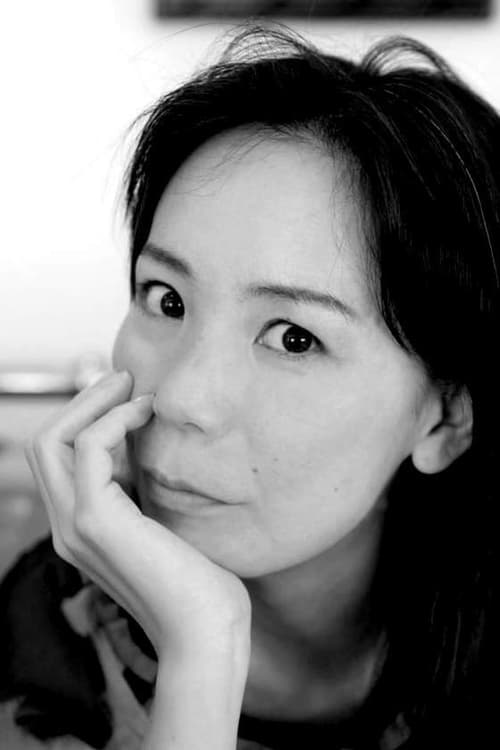
Director
25 composers, 25 filmmakers, 25 ultimate symbioses of music and cinematography that fit completely within the DNA of Film Fest Gent and the World Soundtrack Awards. For the unique 2x25 project, the festival asked 25 composers to compose a short piece of music, after which 25 filmmakers made a short film. The result: 25 exceptional films where the music inspired the form, narrative and texture.

Director
From a vast record of 750 days, 5000 hours, Official Film of the Olympic Games Tokyo 2020 SIDE A and SIDE B are the official documentaries by Naomi Kawase capturing not only the athletes gathered from all over the world, but also their families, people involved in the Games, volunteers, medical personnel, and protesters shouting for the cancellation of the Olympics.
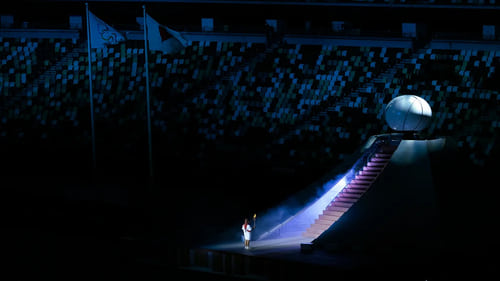
Director
Follows Japanese director Naomi Kawase as she directs the official film of the Tokyo 2020 Olympic Games, giving a message that goes beyond the physical exploit to mark souls, with her style and all her subtlety.

Herself
For every film completed, dozens of potential films fall by the wayside and never make it onto the big screen. In the VR experience Missing Pictures, Abel Ferrara, Tsai Ming-liang, Catherine Hardwicke, Naomi Kawase, and Lee Myung-Se give us a guided tour of a story they were not able to tell.

Director of Photography
Through this short film directed by Naomi Kawase you will witness the expressiveness of students and interviews with educators from Waldorf school’s throughout Japan.

Editor
Through this short film directed by Naomi Kawase you will witness the expressiveness of students and interviews with educators from Waldorf school’s throughout Japan.

Director
Through this short film directed by Naomi Kawase you will witness the expressiveness of students and interviews with educators from Waldorf school’s throughout Japan.
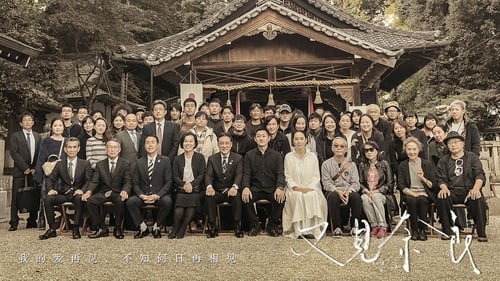
Executive Producer
An old Chinese woman visits Japan to find her missing daughter whom she adopted in post-WWII China. Her granddaughter and a retired Japanese policeman join her search.

Screenplay
Kiyokazu Kurihara e Satoko são um casal que, no desejo de ter um filho, adota um bebê. Seis anos depois, enquanto vivem um feliz casamento, eles recebem uma ligação de uma mulher chamada Hikari Katakura, alegando ser a mãe biológica de Asato, o filho adotado do casal. Hikari diz querer seu filho de volta, chantageando a família com a pedida de uma alta quantia de dinheiro.

Director
Kiyokazu Kurihara e Satoko são um casal que, no desejo de ter um filho, adota um bebê. Seis anos depois, enquanto vivem um feliz casamento, eles recebem uma ligação de uma mulher chamada Hikari Katakura, alegando ser a mãe biológica de Asato, o filho adotado do casal. Hikari diz querer seu filho de volta, chantageando a família com a pedida de uma alta quantia de dinheiro.

A young bioarchaeologist Yukisuke is attracted to a girl Koyomi, who runs a small stand of taiyaki pastry that he often buys. Koyomi is hospitalized, however, by a car accident on a rainy day after they go out together, and wakes up with short term memory loss, where she cannot remember anything beyond the present day. Yukisuke tries to live close to her as before but the lack of collective memory starts to stagger him.
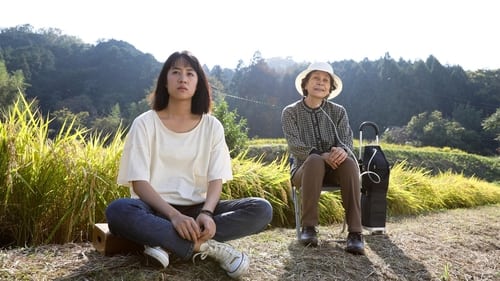
Executive Producer
After losing his son, Tatsuya is anguished by the danger of his ancient family line coming to an end. His mother Haru urges him to embark on a loveless second marriage, and meanwhile he secretly hopes that his daughter Yoshiko will marry a husband willing to adopt the Nikaido name and follow in his footsteps.

Writer
In the form of a fiction, Naomi Kawase delivers a self-portrait which is also a re-crossing of her earlier films. The old city of Nara, the first capital of Japan where Naomi Kawase is from and where she still lives, opens up a reverie where past, present and future meet. In its winding streets mingle the "Haré" of days of celebration and ceremony and the "Ké" of everyday life.

Director
In the form of a fiction, Naomi Kawase delivers a self-portrait which is also a re-crossing of her earlier films. The old city of Nara, the first capital of Japan where Naomi Kawase is from and where she still lives, opens up a reverie where past, present and future meet. In its winding streets mingle the "Haré" of days of celebration and ceremony and the "Ké" of everyday life.
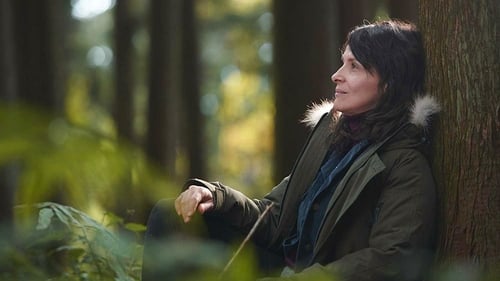
Producer
Jeanne, uma jornalista francesa, vai ao Japão em busca de Vision, uma erva medicinal rara que nasce a cada 997 anos em circunstâncias especiais e promete curar toda a angústia e fraqueza espiritual da humanidade. Um evento milenar está prestes a ocorrer nas montanhas Yoshino de Nara, abrindo uma porta para o verdadeiro potencial da existência humana.

Writer
Jeanne, uma jornalista francesa, vai ao Japão em busca de Vision, uma erva medicinal rara que nasce a cada 997 anos em circunstâncias especiais e promete curar toda a angústia e fraqueza espiritual da humanidade. Um evento milenar está prestes a ocorrer nas montanhas Yoshino de Nara, abrindo uma porta para o verdadeiro potencial da existência humana.

Director
Jeanne, uma jornalista francesa, vai ao Japão em busca de Vision, uma erva medicinal rara que nasce a cada 997 anos em circunstâncias especiais e promete curar toda a angústia e fraqueza espiritual da humanidade. Um evento milenar está prestes a ocorrer nas montanhas Yoshino de Nara, abrindo uma porta para o verdadeiro potencial da existência humana.

Writer
Six stories based on six songs, the first project of Cinema Fighters.

Director
Six stories based on six songs, the first project of Cinema Fighters.

Director
Toru revisits the astronomical observatory in his old school for the first time in 15 years. He finds a notebook in the room that remained unchanged and frozen in time. "Thanks for watching me." It was a message from Shinya, a member of the school dance club, who he had feelings for.

Screenplay
Uma escritora apaixonada por versões cinematográficas para deficientes visuais se apaixona por um fotógrafo mais velho que está perdendo lentamente a visão.

Director
Uma escritora apaixonada por versões cinematográficas para deficientes visuais se apaixona por um fotógrafo mais velho que está perdendo lentamente a visão.

Director
This is the story about the life and artistic views of a designer through an interview that’s replete with poetic dialogue.

Writer
Naomi Kawase describes Sakura Ando, the lead character in her film, as "a mysterious creature" who is "like a fairy. SEED is the story of the journey this girl takes from the enchanted nature of Nara to the chaos of Tokyo, and the encounters she has along the way. A boy offers her the gift of an apple, which she in turn gives to a homeless man, who proffers a soft piece of chiffon fabric in return. Moving like a tree that sways in the wind, the girl embodies a spirit that secretly runs through places and living things. The eleventh film commissioned by Miu Miu Women's Tales was directed by the multiple Cannes award-winning Japanese director Naomi Kawase.

Director
Naomi Kawase describes Sakura Ando, the lead character in her film, as "a mysterious creature" who is "like a fairy. SEED is the story of the journey this girl takes from the enchanted nature of Nara to the chaos of Tokyo, and the encounters she has along the way. A boy offers her the gift of an apple, which she in turn gives to a homeless man, who proffers a soft piece of chiffon fabric in return. Moving like a tree that sways in the wind, the girl embodies a spirit that secretly runs through places and living things. The eleventh film commissioned by Miu Miu Women's Tales was directed by the multiple Cannes award-winning Japanese director Naomi Kawase.
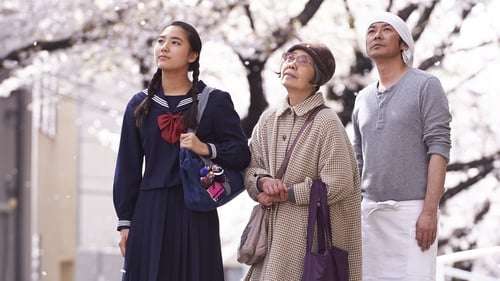
Associate Producer
Sentaro gere uma pequena pastelaria de dorayakis – uma especialidade japonesa que consiste em duas panquecas recheadas com doce de feijão (“an”, no original). Quando Tokue, uma senhora com cerca de 70 anos, se oferece para trabalhar na pastelaria, ele aceita com relutância. No entanto, Tokue rapidamente prova que a sua receita de “an” é mágica. Graças à sua receita secreta, o negócio de Sentaro floresce rapidamente. Com o tempo, Sentaro e Tokue abrem os seus corações, e desenvolvem uma relação de amizade que vai revelando também algumas feridas do passado.

Director
Sentaro gere uma pequena pastelaria de dorayakis – uma especialidade japonesa que consiste em duas panquecas recheadas com doce de feijão (“an”, no original). Quando Tokue, uma senhora com cerca de 70 anos, se oferece para trabalhar na pastelaria, ele aceita com relutância. No entanto, Tokue rapidamente prova que a sua receita de “an” é mágica. Graças à sua receita secreta, o negócio de Sentaro floresce rapidamente. Com o tempo, Sentaro e Tokue abrem os seus corações, e desenvolvem uma relação de amizade que vai revelando também algumas feridas do passado.

Screenplay
Sentaro gere uma pequena pastelaria de dorayakis – uma especialidade japonesa que consiste em duas panquecas recheadas com doce de feijão (“an”, no original). Quando Tokue, uma senhora com cerca de 70 anos, se oferece para trabalhar na pastelaria, ele aceita com relutância. No entanto, Tokue rapidamente prova que a sua receita de “an” é mágica. Graças à sua receita secreta, o negócio de Sentaro floresce rapidamente. Com o tempo, Sentaro e Tokue abrem os seus corações, e desenvolvem uma relação de amizade que vai revelando também algumas feridas do passado.
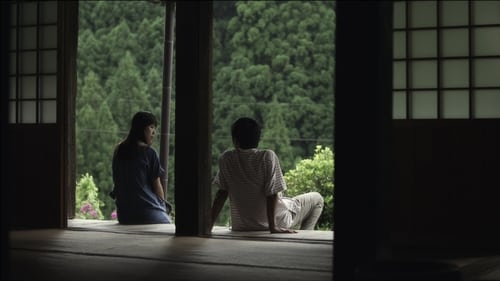
Producer
Reality and fantasy melds as a Korean documentary film director attempts to capture life in the small town of Gojo, Japan.

Self
Using rare footage and exclusive interviews with filmmakers from all over the globe, "Reel Herstory" corrects the historic notion that women behind the scenes in motion pictures held peripheral careers compared with their male counterparts.
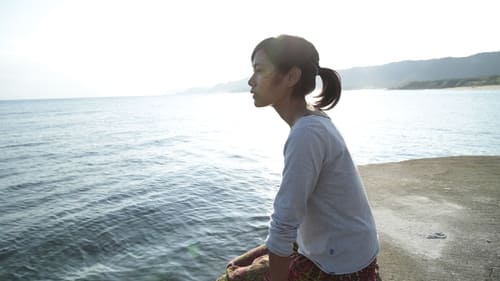
Editor
Em Amami-Oshima, uma ilha subtropical do Japão, tradições sobre a natureza permanecem eternas. Durante a noite de lua cheia das tradicionais danças de agosto, o jovem Kaito, de 16 anos, encontra um corpo flutuando no mar. Sua namorada Kyoko tentará ajudá-lo a desvendar o mistério. Juntos, Kaito e Kyoko aprenderão a ser adultos experimentando a tessitura dos ciclos da vida, da morte e do amor.

Producer
Em Amami-Oshima, uma ilha subtropical do Japão, tradições sobre a natureza permanecem eternas. Durante a noite de lua cheia das tradicionais danças de agosto, o jovem Kaito, de 16 anos, encontra um corpo flutuando no mar. Sua namorada Kyoko tentará ajudá-lo a desvendar o mistério. Juntos, Kaito e Kyoko aprenderão a ser adultos experimentando a tessitura dos ciclos da vida, da morte e do amor.

Screenplay
Em Amami-Oshima, uma ilha subtropical do Japão, tradições sobre a natureza permanecem eternas. Durante a noite de lua cheia das tradicionais danças de agosto, o jovem Kaito, de 16 anos, encontra um corpo flutuando no mar. Sua namorada Kyoko tentará ajudá-lo a desvendar o mistério. Juntos, Kaito e Kyoko aprenderão a ser adultos experimentando a tessitura dos ciclos da vida, da morte e do amor.

Director
Em Amami-Oshima, uma ilha subtropical do Japão, tradições sobre a natureza permanecem eternas. Durante a noite de lua cheia das tradicionais danças de agosto, o jovem Kaito, de 16 anos, encontra um corpo flutuando no mar. Sua namorada Kyoko tentará ajudá-lo a desvendar o mistério. Juntos, Kaito e Kyoko aprenderão a ser adultos experimentando a tessitura dos ciclos da vida, da morte e do amor.
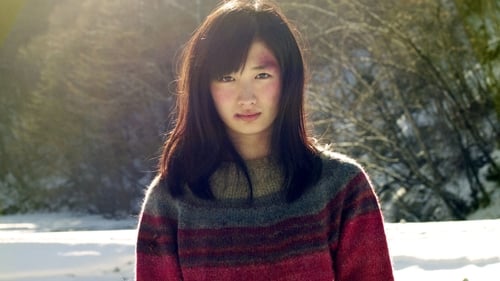
Dr. Amamiya
É verão quando Kudo, chega em Iya, local onde as riquezas da natureza ainda abundam. Exausto da vida em Tóquio, o rapaz acredita que a bela terra lhe trará um pouco de tranquilidade. Mas, a realidade não será tão fácil como ele espera, uma vez que um projeto de construção de túneis, ameaça a ordem natural de uma das últimas regiões intocadas do Japão. Já os agricultores estão tentando salvar suas colheitas de animais nocivos, como veados e macacos. As pessoas estão lutando por seus próprios objetivos: conseguir um emprego, salvar o meio ambiente ou sobreviver. (e 10 - Estimado 10 Anos)

Herself
Kawase pays tribute to the grandmother that raised her after being separated from her parents as a child. The film teems with memories, but it is the faded, dusty photographs capturing the kindness in her grandmother’s shy smile that truly bring the woman to life.

Director
Kawase pays tribute to the grandmother that raised her after being separated from her parents as a child. The film teems with memories, but it is the faded, dusty photographs capturing the kindness in her grandmother’s shy smile that truly bring the woman to life.

Producer
Director Pedro came to Japan in April 2011, started shooting in the village Totsukawa of Nara Prefecture. He, as Himotoku, began to spin the story with his camera instead of a brush…
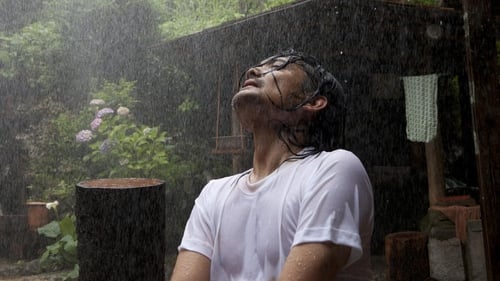
Editor
Woodwork artist Takumi moves to the small village Asuka in Nara Prefecture. He remodels old homes and lives a peaceful existence with nature. Takumi then meets Kayoko, a woman who went to the same school as Takumi. Kayoko is fascinated with the color crimson. She dyes scarves with the color of hanezu. Kayoko lives with boyfriend Tetsuya, who works as an editor of a PR magazine. They live together. Soon, Kayoko falls in love with Takumi.

Director of Photography
Woodwork artist Takumi moves to the small village Asuka in Nara Prefecture. He remodels old homes and lives a peaceful existence with nature. Takumi then meets Kayoko, a woman who went to the same school as Takumi. Kayoko is fascinated with the color crimson. She dyes scarves with the color of hanezu. Kayoko lives with boyfriend Tetsuya, who works as an editor of a PR magazine. They live together. Soon, Kayoko falls in love with Takumi.

Screenplay
Woodwork artist Takumi moves to the small village Asuka in Nara Prefecture. He remodels old homes and lives a peaceful existence with nature. Takumi then meets Kayoko, a woman who went to the same school as Takumi. Kayoko is fascinated with the color crimson. She dyes scarves with the color of hanezu. Kayoko lives with boyfriend Tetsuya, who works as an editor of a PR magazine. They live together. Soon, Kayoko falls in love with Takumi.

Director
Woodwork artist Takumi moves to the small village Asuka in Nara Prefecture. He remodels old homes and lives a peaceful existence with nature. Takumi then meets Kayoko, a woman who went to the same school as Takumi. Kayoko is fascinated with the color crimson. She dyes scarves with the color of hanezu. Kayoko lives with boyfriend Tetsuya, who works as an editor of a PR magazine. They live together. Soon, Kayoko falls in love with Takumi.

Director
An anthology of one-minute films created by 60 international filmmakers on the theme of the death of cinema. Intended as an ode to 35mm, the film was screened one time only on a purpose-built 20x12 meter public cinema screen in the Port of Tallinn, Estonia, on 22 December 2011. A special projector was constructed for the event which allowed the actual filmstrip to be burnt at the same time as the film was shown.

Director
Um tributo às vítimas do terremoto Sismo que atingiu o japão no dia onze de março de 2011, onde mais de quinze mil pessoas morreram. Cada diretor convidado elaborou um curta-metragem de três minutos e onze segundos para expressar seus sentimentos em relação a tragédia que abalou o país.

Producer
About Tadashi Yoshimura's maternity clinic where he practice "natural births" deep in the forest of Okazaki (Japan).

Writer
About Tadashi Yoshimura's maternity clinic where he practice "natural births" deep in the forest of Okazaki (Japan).

Director
About Tadashi Yoshimura's maternity clinic where he practice "natural births" deep in the forest of Okazaki (Japan).

Director
Kawase explores the fragile and often tense history between Korea and Japan through the relationship that develops between a third generation Korean-Japanese man, who unexpectedly visits the small and quiet village of Koma, and a Japanese woman, a somewhat mysterious inhabitant of the village.
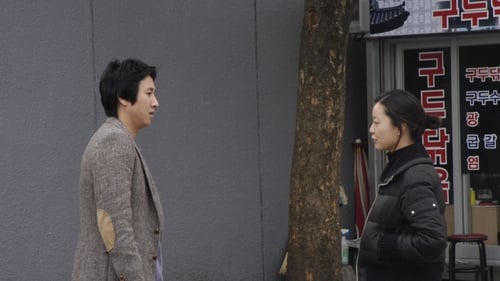
Director
Hong Sang-Soo’s Lost in the Mountains (South Korea, 32min) the visitor is the supremely self-centred Mi-Sook, who drives to Jeonju on impulse to see her classmate Jin-Young – only to discover that her friend is having an affair with their married professor, who Mi-Sook once dated herself. The level of social embarrassment goes off the scale. In Naomi Kawase’s Koma (Japan, 34min), Kang Jun-Il travels to a village in rural Japan to honour his grandfather’s dying wish by returning a Buddhist scroll to its ancestral home. Amid ancient superstitions, a new relationship forms. And in Lav Diaz’ Butterflies Have No Memories (Philippines, 42min) ‘homecoming queen’ Carol returns to the economically depressed former mining town she came from – and becomes the target of an absurd kidnapping plot hatched by resentful locals. Serving as his own writer, cameraman and editor, Diaz casts the film entirely from members of his crew and delivers a well-seasoned mix of social realism and fantasy. —bfi

Director
Kawase's entry in the Haiku project

Cinematography
The exhibition 'The Complete Letters' features epistolary works defined by cinematographic creation. This is an experimental communication format used between pairs of film directors. Although each director is situated in a location geographically distant from that of their partner, they are united by their willingness to share ideas and reflections on all that motivates their work. Within this space of freedom, the directors featured in the exhibition examine their affinities and differences, within an environment of mutual respect and simultaneity of interests and with notable formal variants established in each of the correspondences.

Editor
The exhibition 'The Complete Letters' features epistolary works defined by cinematographic creation. This is an experimental communication format used between pairs of film directors. Although each director is situated in a location geographically distant from that of their partner, they are united by their willingness to share ideas and reflections on all that motivates their work. Within this space of freedom, the directors featured in the exhibition examine their affinities and differences, within an environment of mutual respect and simultaneity of interests and with notable formal variants established in each of the correspondences.

Director
The exhibition 'The Complete Letters' features epistolary works defined by cinematographic creation. This is an experimental communication format used between pairs of film directors. Although each director is situated in a location geographically distant from that of their partner, they are united by their willingness to share ideas and reflections on all that motivates their work. Within this space of freedom, the directors featured in the exhibition examine their affinities and differences, within an environment of mutual respect and simultaneity of interests and with notable formal variants established in each of the correspondences.
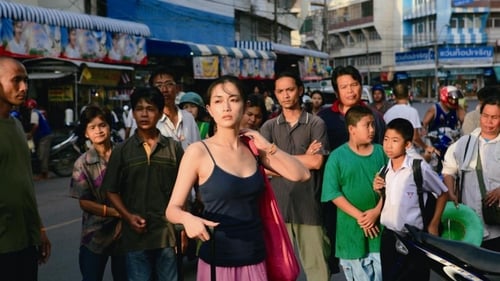
Editor
A young woman leaves her job and lover in Japan to start a new life in Thailand.

Producer
A young woman leaves her job and lover in Japan to start a new life in Thailand.

Screenplay
A young woman leaves her job and lover in Japan to start a new life in Thailand.

Director
A young woman leaves her job and lover in Japan to start a new life in Thailand.
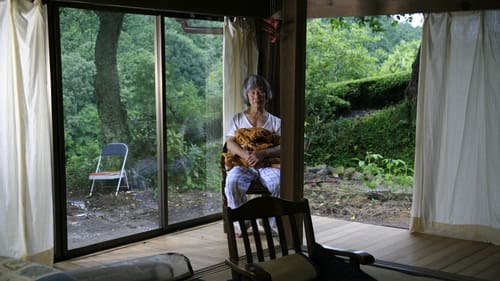
Producer
A caregiver at a small retirement home takes one of her patients for a drive to the country, but the two wind up stranded in a forest where they embark on an exhausting and enlightening two-day journey.

Screenplay
A caregiver at a small retirement home takes one of her patients for a drive to the country, but the two wind up stranded in a forest where they embark on an exhausting and enlightening two-day journey.

Director
A caregiver at a small retirement home takes one of her patients for a drive to the country, but the two wind up stranded in a forest where they embark on an exhausting and enlightening two-day journey.

Self
Acompanhando ao mesmo tempo o nascimento de seu filho e o envelhecimento de sua avó, Naomi Kawase investiga a partir de imagens cotidianas a constituição de suas relações familiares e os estágios da vida.

Director of Photography
Acompanhando ao mesmo tempo o nascimento de seu filho e o envelhecimento de sua avó, Naomi Kawase investiga a partir de imagens cotidianas a constituição de suas relações familiares e os estágios da vida.

Director
Acompanhando ao mesmo tempo o nascimento de seu filho e o envelhecimento de sua avó, Naomi Kawase investiga a partir de imagens cotidianas a constituição de suas relações familiares e os estágios da vida.

Reiko
Numa simples brincadeira infantil, numa pequena aldeia japonesa, um menino simplesmente some. Desaparece, sem maiores explicações. O que parece apenas uma ação rotineira e sem consequências se torna o ponto focal de mudança da vida de todos nas famílias daquelas crianças. Anos depois, este sumiço continua não resolvido e a chaga aberta pela perda desta criança marca a vida e as relações entre todos os personagens. Como sempre acontece na vida, as mudanças acontecem de repente, e sem maiores explicações.

Writer
Numa simples brincadeira infantil, numa pequena aldeia japonesa, um menino simplesmente some. Desaparece, sem maiores explicações. O que parece apenas uma ação rotineira e sem consequências se torna o ponto focal de mudança da vida de todos nas famílias daquelas crianças. Anos depois, este sumiço continua não resolvido e a chaga aberta pela perda desta criança marca a vida e as relações entre todos os personagens. Como sempre acontece na vida, as mudanças acontecem de repente, e sem maiores explicações.

Director
Numa simples brincadeira infantil, numa pequena aldeia japonesa, um menino simplesmente some. Desaparece, sem maiores explicações. O que parece apenas uma ação rotineira e sem consequências se torna o ponto focal de mudança da vida de todos nas famílias daquelas crianças. Anos depois, este sumiço continua não resolvido e a chaga aberta pela perda desta criança marca a vida e as relações entre todos os personagens. Como sempre acontece na vida, as mudanças acontecem de repente, e sem maiores explicações.

Director
Kazuo Nishii, renowned editor and photography critic, died in 2001 of stomach cancer. Two months earlier he contacted Naomi Kawase, whose works he admired, to document the remaining weeks of his life. Kawase visits him in the hospital and films the progression of his sickness and the conversations between the two.

Herself
Kazuo Nishii, renowned editor and photography critic, died in 2001 of stomach cancer. Two months earlier he contacted Naomi Kawase, whose works he admired, to document the remaining weeks of his life. Kawase visits him in the hospital and films the progression of his sickness and the conversations between the two.
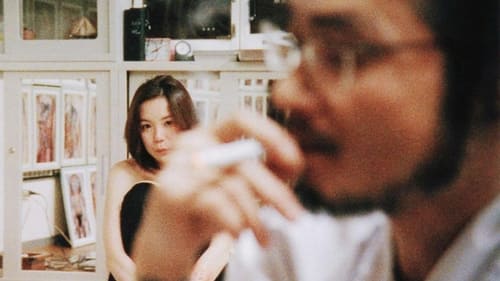
Editor
Kawase tries to come to terms with her late father, whom she never knew when growing up, and contemplates getting a tattoo like his.

Cinematography
Kawase tries to come to terms with her late father, whom she never knew when growing up, and contemplates getting a tattoo like his.

Writer
Kawase tries to come to terms with her late father, whom she never knew when growing up, and contemplates getting a tattoo like his.

Director
Kawase tries to come to terms with her late father, whom she never knew when growing up, and contemplates getting a tattoo like his.

Self
Kawase tries to come to terms with her late father, whom she never knew when growing up, and contemplates getting a tattoo like his.
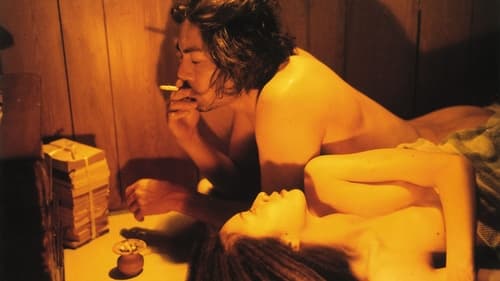
Editor
Emotionally withdrawn strip club dancer Ayako has never recovered from her mother's suicide when she was young. She begins a relationship with patient potter Daiji, but leaves him behind when she quits her job and returns to her home town after a 10 year absence.

Music
Emotionally withdrawn strip club dancer Ayako has never recovered from her mother's suicide when she was young. She begins a relationship with patient potter Daiji, but leaves him behind when she quits her job and returns to her home town after a 10 year absence.

Writer
Emotionally withdrawn strip club dancer Ayako has never recovered from her mother's suicide when she was young. She begins a relationship with patient potter Daiji, but leaves him behind when she quits her job and returns to her home town after a 10 year absence.

Director
Emotionally withdrawn strip club dancer Ayako has never recovered from her mother's suicide when she was young. She begins a relationship with patient potter Daiji, but leaves him behind when she quits her job and returns to her home town after a 10 year absence.

Director
Naomi Kawase collaborates with Shinya Arimoto, a Taiyo award-winning photographer she knows from university, to create a photo album of Machiko Ono (who Kawase scouted for her previous feature film Moe no Suzaku) and Mika Mifune (daughter of famous actor Toshiro Mifune) with the idea to contrast these two aspiring actresses, Ono coming from the rural Nara and Mifune from Tokyo. Kawase documents the photo shooting and interviews Arimoto, Ono and Mifune as the work progresses, while the tension between her and Arimoto increases over disagreement on the direction of the project.
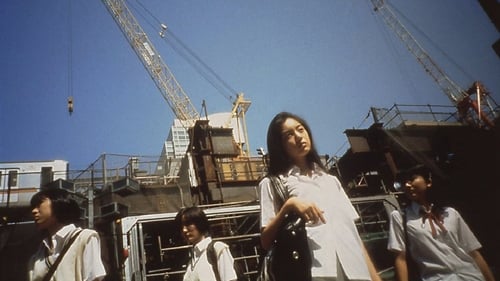
Woman speaking to Hiromi (voice)
Tokyo schoolgirl Hiromi and her friends engage in a practice known as enjo kosai, or "compensated dating", where older men pay young girls for dates. Hiromi plunges deeper into this world to raise money for an expensive ring.
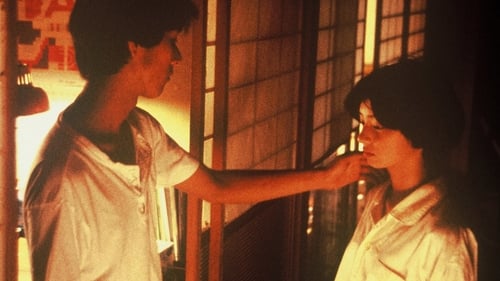
Writer
Depicts the life of a family in a remote Japanese timber village. Family head Tahara Kozo lives with his mother Sachiko, wife Yasuyo, nephew Eisuke and young daughter Michiru. Economic recession and failed development plans cause tragedy in the family.

Director
Depicts the life of a family in a remote Japanese timber village. Family head Tahara Kozo lives with his mother Sachiko, wife Yasuyo, nephew Eisuke and young daughter Michiru. Economic recession and failed development plans cause tragedy in the family.

Director of Photography
Naomi Kawase returns to the mountains of her feature film Suzaku and portraits the people that inspired the movie.

Editor
Naomi Kawase returns to the mountains of her feature film Suzaku and portraits the people that inspired the movie.

Producer
Naomi Kawase returns to the mountains of her feature film Suzaku and portraits the people that inspired the movie.

Director
Naomi Kawase returns to the mountains of her feature film Suzaku and portraits the people that inspired the movie.

The last piece of the trilogy, following 'Katatsumori' and 'See Heaven', filming her grandma and herself. Her gazes and insights are cast on the lovable beings in front of her eyes.

Director
The film takes shape through the form of a video exchange between Hirokazu Kore-eda and Naomi Kawase. Each films the world around them and intimately reflects on their individual struggles with making films. Kore-eda self-consciously reflects on his process, “What does a camera shoot? What does a film capture? The emptiness in my life reflects in my work.” Kawase concentrates on her everyday life and candid moments with her friends, who say, “Hang in there Naomi we are all on your side,” and, “You never keep the promises you make, but I love you anyway.”

Writer
The last piece of the trilogy, following 'Katatsumori' and 'See Heaven', filming her grandma and herself. Her gazes and insights are cast on the lovable beings in front of her eyes.

Director
The last piece of the trilogy, following 'Katatsumori' and 'See Heaven', filming her grandma and herself. Her gazes and insights are cast on the lovable beings in front of her eyes.

Director
Naomi Kawase observes people in the city of Shibuya with curiosity and openness, drawing parallels between life and filmmaking and discovering her abilities as a filmmaker.

Herself
Naomi Kawase observes people in the city of Shibuya with curiosity and openness, drawing parallels between life and filmmaking and discovering her abilities as a filmmaker.
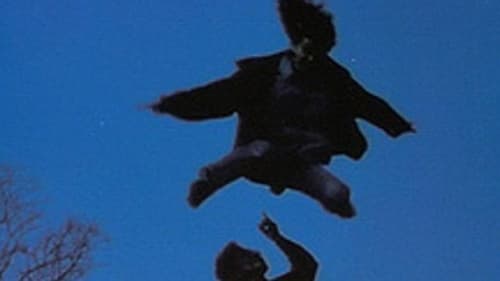
Self
The sequel to Naomi Kawase's Katasumori. The film revisits Kawase’s relationship with her “grandma”, capturing their love and attachment towards each other.

Director
The sequel to Naomi Kawase's Katasumori. The film revisits Kawase’s relationship with her “grandma”, capturing their love and attachment towards each other.
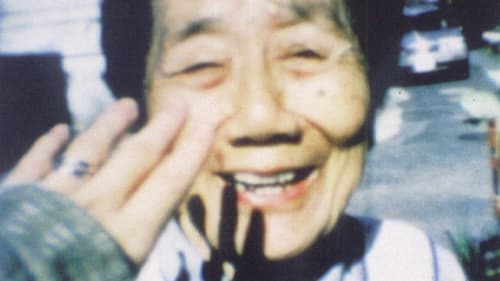
Writer
Filmmaker Naomi Kawase captures the love, loss, and loneliness felt as she prepares to move out of her foster mother's home.

Editor
Filmmaker Naomi Kawase captures the love, loss, and loneliness felt as she prepares to move out of her foster mother's home.

Director of Photography
Filmmaker Naomi Kawase captures the love, loss, and loneliness felt as she prepares to move out of her foster mother's home.

Producer
Filmmaker Naomi Kawase captures the love, loss, and loneliness felt as she prepares to move out of her foster mother's home.

Self
Filmmaker Naomi Kawase captures the love, loss, and loneliness felt as she prepares to move out of her foster mother's home.

Director
Filmmaker Naomi Kawase captures the love, loss, and loneliness felt as she prepares to move out of her foster mother's home.

Director
Taichi, a security worker, meets a girl, Heki, at a bar. The next evening, he sees the beautiful view of his town for the first time in ages, and decides to take the long way home, where he runs into Heki again.
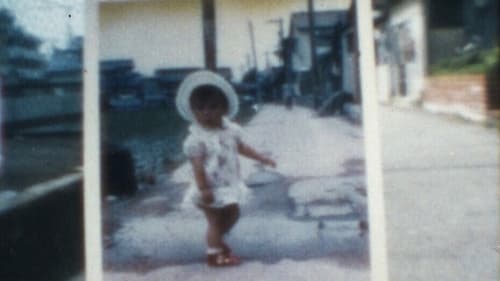
Producer
A diary film about Kawase's relationship with her Grandma and the search for her Father, whom she has not seen since her parents divorced during her early childhood.

Sound Recordist
A diary film about Kawase's relationship with her Grandma and the search for her Father, whom she has not seen since her parents divorced during her early childhood.

Editor
A diary film about Kawase's relationship with her Grandma and the search for her Father, whom she has not seen since her parents divorced during her early childhood.

Director of Photography
A diary film about Kawase's relationship with her Grandma and the search for her Father, whom she has not seen since her parents divorced during her early childhood.

Director
A diary film about Kawase's relationship with her Grandma and the search for her Father, whom she has not seen since her parents divorced during her early childhood.

Self
A diary film about Kawase's relationship with her Grandma and the search for her Father, whom she has not seen since her parents divorced during her early childhood.

Producer
